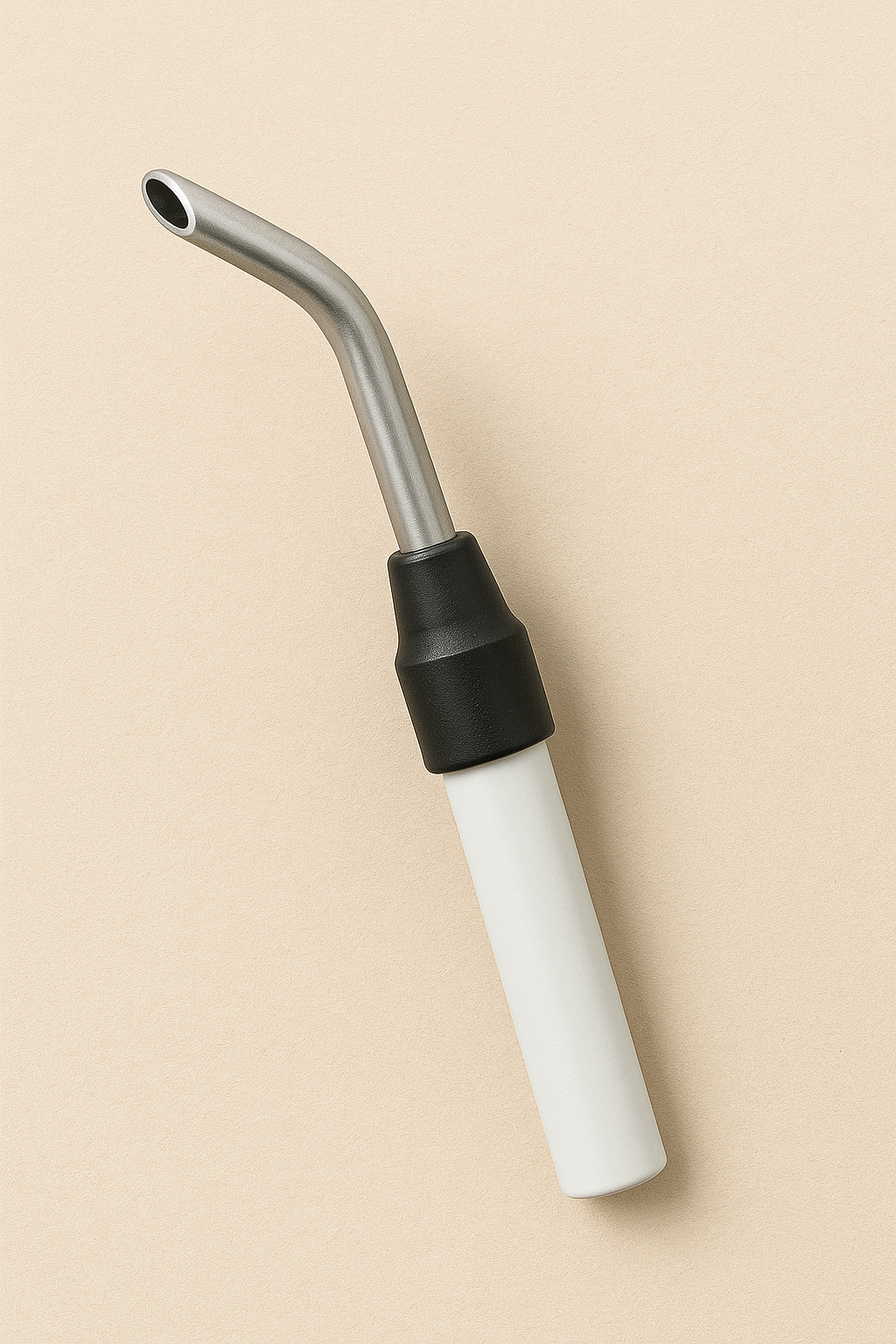In modern dentistry, maintaining a clean, dry, and safe field during procedures is essential. One tool that plays a crucial role in achieving this is the High-Volume Evacuator (HVE). While it may seem like a simple suction device, the HVE tip—its most visible and functional component—has a huge impact on infection control, patient comfort, and clinical efficiency.
This comprehensive guide will cover everything you need to know about HVE tips, including their design, benefits, types, and expert tips for optimal use and maintenance.
What Is an HVE Tip?
An HVE tip is the nozzle or attachment that connects to the High-Volume Evacuator system, a dental suction device designed to remove large volumes of air, water, debris, and aerosols from the oral cavity. Unlike low-volume saliva ejectors, HVEs operate at a much higher flow rate (typically 100 cubic feet per minute or more).
HVE tips are commonly made of plastic, metal, or autoclavable polymer, and come in various shapes and sizes to suit specific dental procedures—from restorative work to ultrasonic scaling and surgical applications.
Why HVE Tips Are Essential in Dentistry
HVE systems—and their tips—serve multiple vital purposes during dental procedures:
1. Infection Control and Aerosol Reduction
With heightened awareness around infection prevention, aerosol management is now a top priority. HVE tips can remove up to 90–98% of airborne particles and aerosols generated during procedures, minimizing the risk of cross-contamination.
2. Improved Visibility
By effectively clearing blood, saliva, and water spray, HVE tips help the dentist maintain a clear, dry field, which improves accuracy and reduces chair time.
3. Patient Comfort
Proper suction prevents gagging and excessive fluid accumulation in the mouth, creating a smoother and more comfortable experience for patients.
4. Enhanced Efficiency
A good-quality HVE tip can streamline procedures by keeping the operative field clean without constant interruptions for rinsing and drying.
Types of HVE Tips
HVE tips come in several designs, each suited to specific applications:
1. Standard Straight Tips
- Most commonly used type.
- Great for general suction during restorative and prophylactic procedures.
- Available in plastic (disposable) or metal (autoclavable) versions.
2. Surgical HVE Tips
- Narrower in diameter.
- Designed for precision suction during surgical procedures or implant placements.
- Often have vented sides to prevent tissue trauma.
3. Curved or Vented Tips
- Angled design for better reach and ergonomics.
- Vented tips help regulate suction power and reduce soft tissue injury.
4. Specialized Aerosol-Control Tips
- Feature integrated barriers or filters to further reduce aerosol spread.
- Common in hygiene procedures involving ultrasonic scaling.
Best Practices for Using HVE Tips
Proper technique and handling are essential to maximize the benefits of your HVE system. Here are some expert recommendations:
1. Positioning Matters
- Keep the HVE tip as close as possible (within 1–2 cm) to the working area.
- Position the tip slightly distal to the tooth being treated to efficiently capture spray and debris.
- Avoid blocking visibility—angle the HVE so the mirror and instruments remain unobstructed.
2. Work as a Team
- The dental assistant plays a critical role in HVE operation.
- Synchronize movements between the dentist and assistant to ensure fluid removal without disrupting the procedure.
3. Choose the Right Tip for the Procedure
- Use wide-bore tips for restorative and high-spray procedures.
- Opt for smaller or surgical tips when precision suction is required.
4. Maintain Proper Airflow
- Regularly check for blockages or cracks in tubing and connections.
- Replace tips that are worn, clogged, or damaged to ensure full suction performance.
Cleaning, Sterilization, and Maintenance
Proper care of HVE tips is crucial for infection control and system longevity.
Disposable Tips
- Use once per patient and discard properly according to infection control protocols.
- Opt for biodegradable options when available to minimize environmental impact.
Reusable Tips
- Rinse immediately after use to remove debris.
- Use a cleaning brush to scrub internal surfaces.
- Autoclave according to manufacturer’s instructions.
- Inspect for cracks or discoloration before reuse.
HVE Line Maintenance
- Flush the HVE lines daily with an enzymatic cleaner or disinfectant solution.
- Run clean water for at least 30 seconds between patients.
- Consider using HVE filters to prevent debris from entering the system.
Sustainability and Innovation in HVE Tips
The dental industry is embracing sustainability without compromising safety. Many manufacturers now offer:
- Eco-friendly disposable HVE tips made from recycled or compostable materials.
- Autoclavable HVE tips that can be reused hundreds of times, reducing waste.
- Ergonomic and noise-reduction designs that enhance operator comfort.
Emerging technologies also integrate aerosol filtration and anti-retraction valves, further elevating infection control standards.
Key Takeaways
| Topic | Summary |
|---|---|
| Function | Removes aerosols, fluids, and debris efficiently |
| Benefits | Infection control, visibility, patient comfort |
| Types | Straight, curved, surgical, and vented |
| Best Practices | Proper positioning, teamwork, maintenance |
| Sterilization | Clean after each use; autoclave reusable tips |
| Sustainability | Eco-friendly and reusable designs available |
Final Thoughts
Though small in size, HVE tips are a powerhouse tool in every dental practice. They enhance procedural efficiency, protect both patients and practitioners, and uphold the highest standards of infection control. By choosing the right type, maintaining them properly, and using the correct technique, dental professionals can make a significant difference in safety and performance.
A well-managed HVE system is not just about suction—it is about creating a cleaner, safer, and more efficient dental environment.

